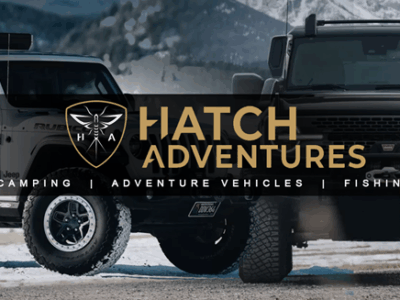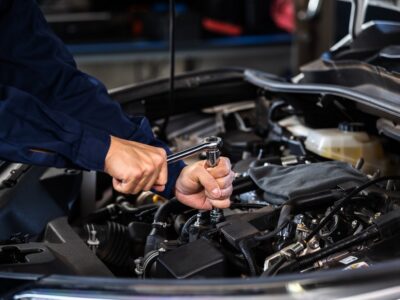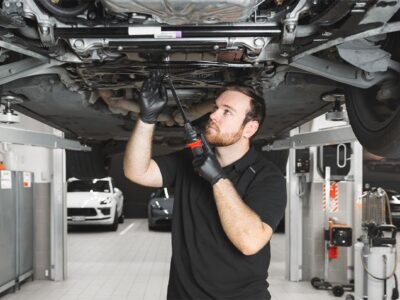Embarking on an overlanding trip is an exhilarating adventure that promises the thrill of the open road and the discovery of hidden gems. However, to ensure a smooth and safe journey, it’s imperative to prepare your vehicle meticulously.
Here’s a comprehensive guide to the essential checks and preparations for your vehicle before setting off on your overlanding expedition.
Thorough Vehicle Inspection
Before any long journey, especially overlanding, a thorough vehicle inspection is crucial. Check the following components:
Tires and Wheels
- Tire Condition: Inspect for any signs of wear and tear, including uneven tread wear, cracks, or punctures.
- Tire Pressure: Ensure all tires, including the spare, are inflated to the recommended pressure.
- Alignment and Balancing: Proper alignment and balancing are essential to avoid uneven tire wear and improve fuel efficiency.
Brakes
- Brake Pads and Discs: Check the thickness of brake pads and the condition of brake discs. Replace if necessary.
- Brake Fluid: Ensure the brake fluid is at the correct level and in good condition. Replace if it’s old or contaminated.
Suspension and Steering
- Suspension System: Inspect for any leaks, damage, or worn-out components. This includes shocks, struts, and springs.
- Steering Mechanism: Ensure there’s no excessive play in the steering and that it operates smoothly.
Engine and Transmission
The heart of your vehicle needs to be in top condition for an overlanding trip.
Engine
- Oil Level and Quality: Check the engine oil level and top up or replace if necessary. Use the oil type recommended by your vehicle’s manufacturer.
- Coolant: Ensure the coolant is at the correct level and in good condition. Overheating can be a major issue in remote areas.
- Belts and Hoses: Inspect for any signs of wear or damage. Replace any that look brittle or cracked.
Transmission
- Transmission Fluid: Check the level and condition of the transmission fluid. Replace if it’s dirty or old.
- Transmission Performance: Ensure the transmission shifts smoothly and without hesitation.
Electrical System
A reliable electrical system is vital for overlanding, especially if you rely on electronic navigation and communication devices.
Battery
- Battery Condition: Check for any corrosion on the terminals and ensure they are clean and tight.
- Battery Life: Wondering “how long does a car battery last”? It’s important to know this information about your specific car battery, and how long it’s able to power your vehicle before a jumpstart will be required.
Lights
- Headlights and Taillights: Ensure all lights are functioning correctly and replace any burnt-out bulbs.
- Auxiliary Lights: If you have additional lighting, such as fog lights or light bars, ensure they are operational.
Fluids and Filters
Regular maintenance of fluids and filters is crucial for the longevity and performance of your vehicle.
Fluids
- Brake Fluid: As mentioned, ensure it’s at the correct level and in good condition.
- Power Steering Fluid: Check the level and top up if necessary.
- Windshield Washer Fluid: Ensure the reservoir is full and the system works properly.
Filters
- Air Filter: Replace if it’s dirty to ensure optimal engine performance.
- Fuel Filter: A clean fuel filter ensures efficient fuel delivery to the engine.
- Cabin Filter: Replace to ensure good air quality inside the vehicle.
Recovery Gear and Spare Parts
Being prepared for potential breakdowns or getting stuck is crucial in remote areas.
Recovery Gear
- Winch: Ensure your winch is in good working condition and properly mounted.
- Recovery Straps and Shackles: Inspect for any damage and ensure they are rated for your vehicle’s weight.
- Shovel and Traction Boards: Essential for getting unstuck in sand, mud, or snow.
Spare Parts
- Spare Tire: Ensure it’s in good condition and properly inflated.
- Tools: Carry a comprehensive tool kit for on-the-spot repairs.
- Spare Parts: Consider carrying essential spare parts like belts, hoses, and fuses.
Navigation and Communication
Reliable navigation and communication tools are essential for a successful overlanding trip.
GPS and Maps
- GPS Device: Ensure it’s updated with the latest maps and has off-road capabilities.
- Paper Maps: Carry paper maps as a backup in case of electronic failure.
Communication
- Radio: A CB or ham radio can be invaluable for communication in remote areas.
- Cell Phone and Charger: Ensure your phone is fully charged and consider a portable charger or solar charger.
Personal and Safety Gear
Lastly, ensure you have the necessary personal and safety gear.
First Aid Kit
- Comprehensive Kit: Ensure it’s stocked with bandages, antiseptics, medications, and any personal medical needs.
Emergency Supplies
- Food and Water: Carry enough non-perishable food and water for the duration of your trip, plus extra in case of emergencies.
- Clothing and Shelter: Pack appropriate clothing for the climate and a tent or other shelter.
By meticulously preparing your vehicle and gear, you can ensure a safe and enjoyable overlanding experience. Happy adventuring!








Comments